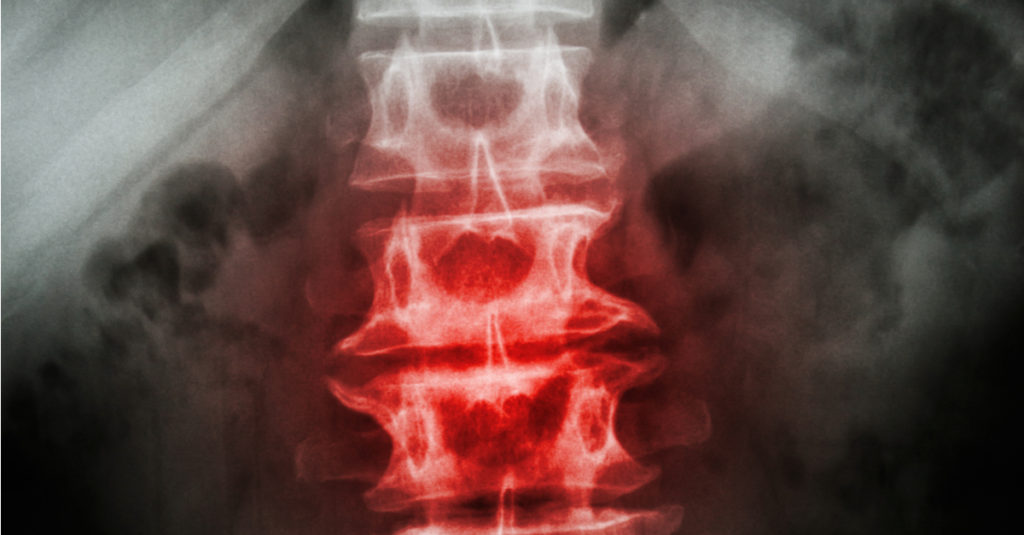Spondylosis, which is often referred to as spinal osteoarthritis, is a degenerative disorder that affects the soft tissues and bones of the spine. Spondylosis is a highly individualized condition. Aging is the primary cause; however, factors such as weight, musculoskeletal injuries, occupations, genetics, and tobacco use play key roles in the disorder’s development and progression. To learn more about spondylosis, it is important that we first go over some related anatomy.
Related Anatomy
The spine is a complex musculoskeletal structure composed of thirty-three bones known as vertebrae. The vertebrae perfectly align to form an anatomical spine that has three important functions: support the body, move the body, and protect the spinal cord. The three regions of the spine are the following:
-
The cervical or neck region
-
The thoracic or mid-back region
-
The lumbar or lower back region
Spondylosis most commonly affects the vertebrae of the cervical and lumbar regions, as those are the ones that support the most weight and facilitate movement. This condition first presents as mild inflammation of the vertebrae and their soft tissue attachments. If spondylosis is left untreated, inflammation will become worse and symptoms ranging from mild to severe may present.
Symptoms of Spondylosis
Pain and stiffness are the two most common symptoms, but other symptoms may include tingling, numbness, and/or weakness in the extremities. Usually, these symptoms occur due to the spinal cord or a spinal nerve root being pinched by a bone spur that develops because of persistent inflammation.
Diagnosis of Spondylosis
An neurosurgeon diagnoses spondylosis using the following:
-
A medical history. A detailed medical history includes the patients current and previous medical conditions and injuries. It also includes a description of the patient’s symptoms and their severity.
-
A physical exam. A physical exam consists of a serious of tests that allow the specialist to accurately diagnosis spondylosis.
-
Medical imaging studies. X-rays, MRIs, and CT scans show the specialist the bones and soft tissues of the spine.
Once diagnosed, an effective treatment plan can be prescribed.
Treatments for Spondylosis
When spondylosis is diagnosed in its early to moderate stages, nonsurgical treatment options are very effective. The most common include the following:
-
Stopping or slowing down activities gives inflammation a chance to calm down.
-
Activity modification. Slowing down or stopping activities that cause symptoms ensures that spondylosis will not progress.
-
Nonsteroidal anti-inflammatory drugs (NSAIDs). Over-the-counter and prescription medications used to decrease pain and inflammation.
-
Physical therapy. Stretching and strengthening exercises that help decrease pain and stiffness and improve range of motion.
Spondylosis that produces severe symptoms may need to be treated using surgical intervention.
Minimally invasive spine surgery is a relatively new type of surgery that eliminates symptoms. The main advantage of minimally invasive spine surgery is decreased recovery time.
Seeking Treatment for Spondylosis
If you are experiencing chronic back pain and are looking for a pain relief solution, it can be found when you
contact one of our 3 Southern California offices. We will find out what is causing your pain and then come up with a personalized treatment plan. You can expect results when you choose our clinic.


